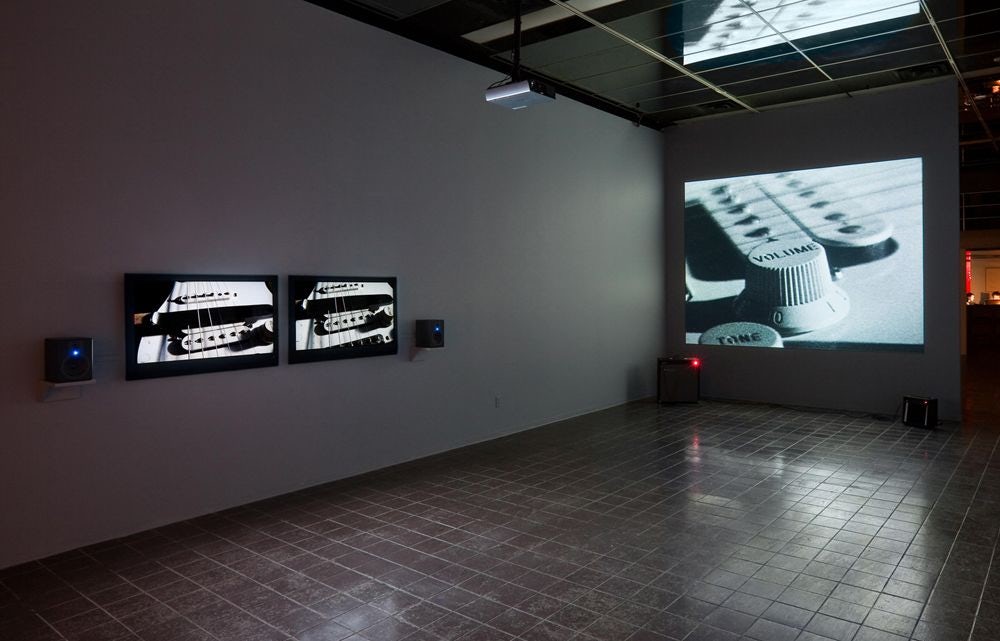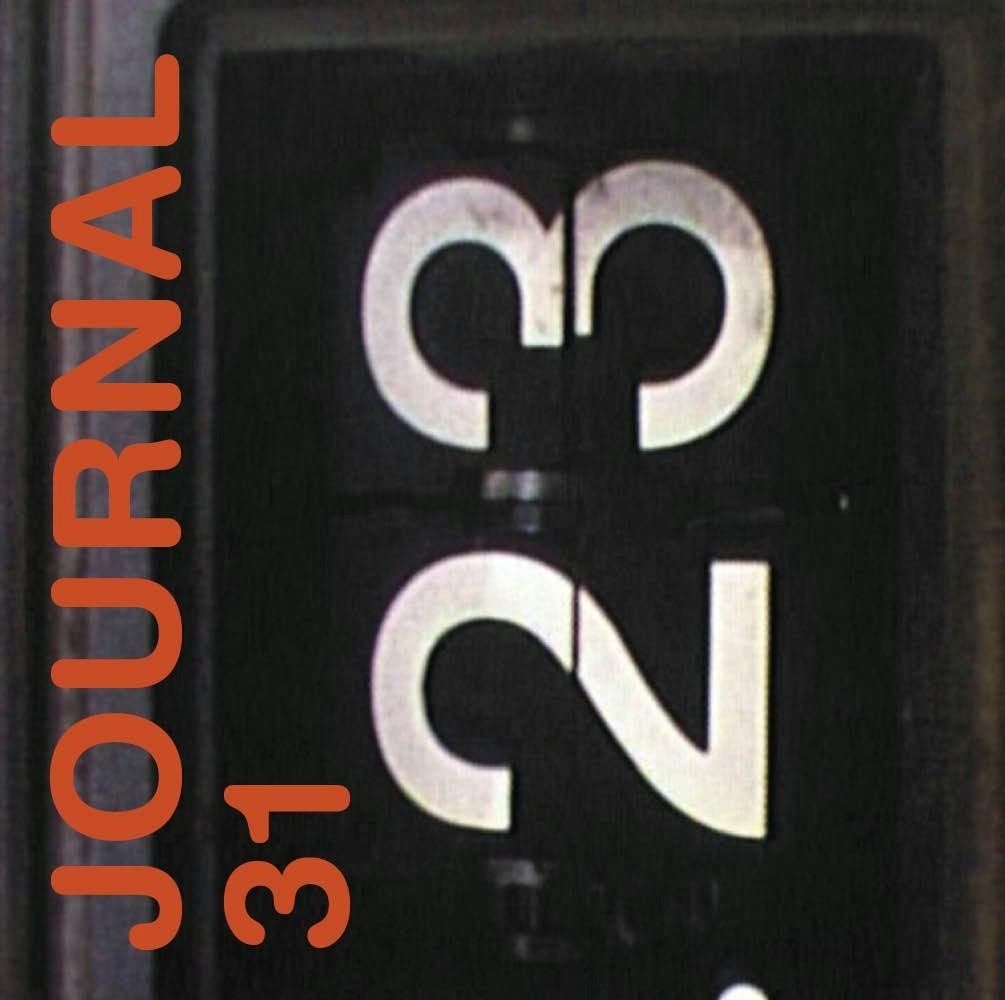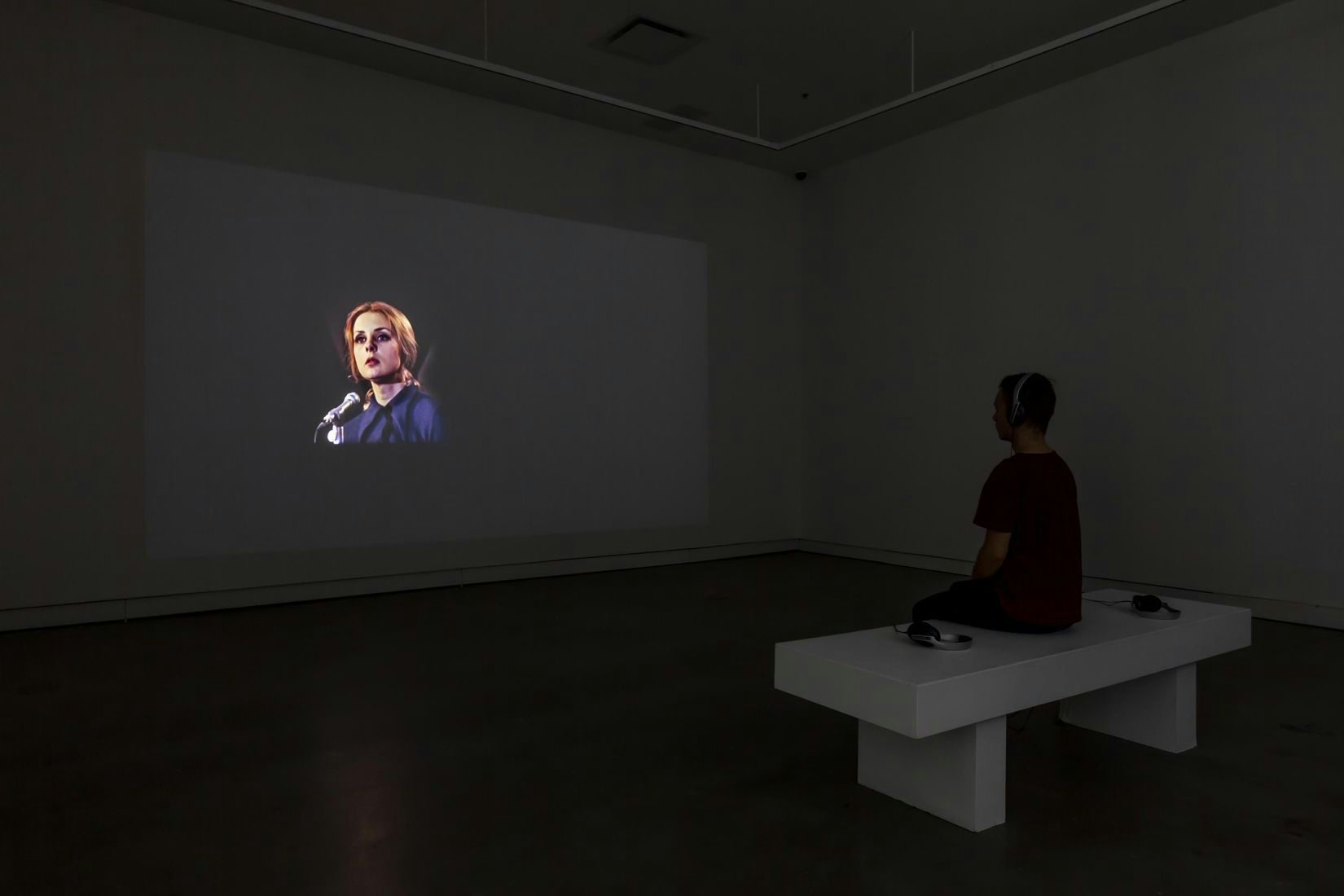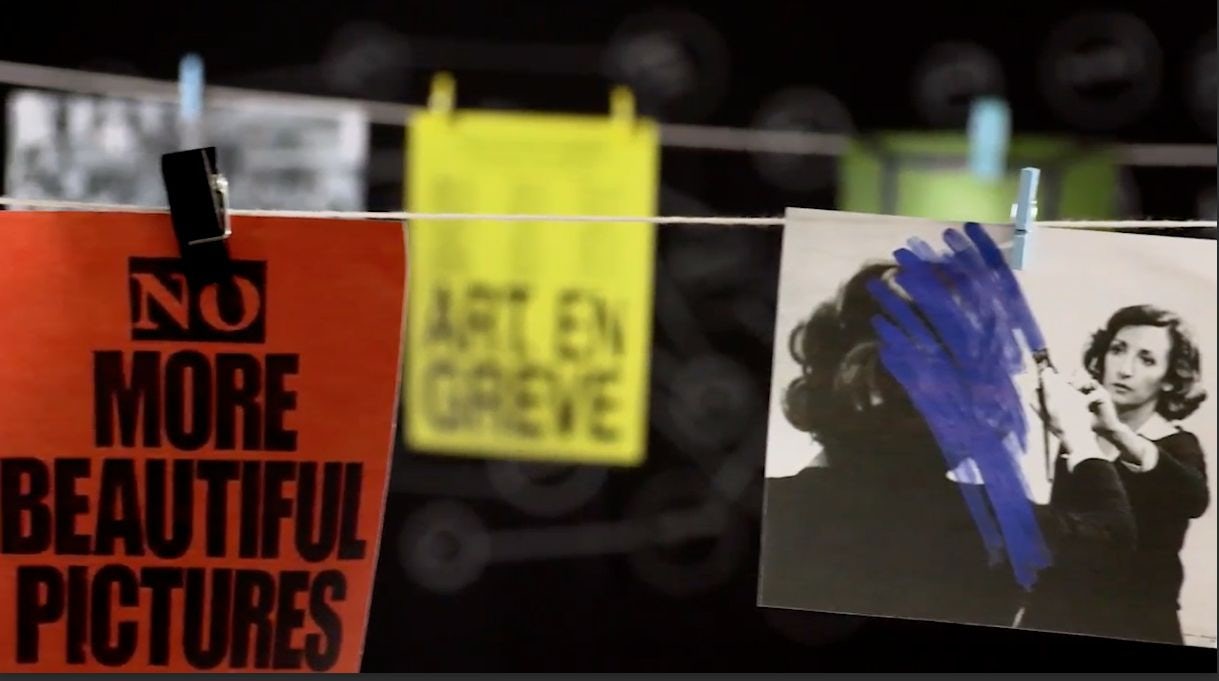
Nelson Henricks
2009.11.07 - 12.19
MONIQUE MOUMBLOW
I have never failed to be seduced by the images in Nelson Henrick’s videos. They are lush, often shot on film, and edited together in ways that are hypnotic and enticing. While watching the works that are going to be shown at VOX, it occurs to me that more than half of the shots are extreme close-ups of objects that fill the entire screen. Some of the items are mundane, like a cup, while others are more suggestive, like a knife. Many of these things seem pulled from another era and some of them make frequent re-appearances, like hands, guitars or turntables. Without really thinking about it, I compile a list, carefully writing down everything that makes an appearance in The Sirens, Failure and Countdown.

On August 31, 2009 Nelson and I sit down and do a sort of free-association on the list that I have compiled. I don’t know what I have in mind, but I feel inexplicably compelled to catalogue all these objects.
When I arrive at Nelson’s house we go into the living room and sit down on the couch. We have a cup of tea, and he more or less follows my rules. As I read off the list of objects, he responds with one-word answers. He tries not to think about it too much and we don’t make any revisions.
| EYES | PIERRE |
|---|---|
| GLASSES | ME |
| EARS | HEARING |
| TORSO | SEXY |
| TURNTABLE | RECORD |
| RECORD NEEDLE | GOUGING |
| BEARD | FATHER |
| RAZOR | MOTHER |
| CALVES | SEXY |
| RUNNING SHOES | WELL WORN |
| BLACK CURTAIN | WHAT’S BEHIND |
| PHOTO LIGHTS | POINTING |
| FACE | OPENNESS |
| AMPLIFIER | MUSIC |
| FORK | STAB |
| SPEAKER | MOUTH |
| SPOON | NOURISH |
| MONITOR | LIGHT |
| NEEDLES | PIERCING |
| WINE GLASS | SHATTER |
| FINGERS | TAPPING |
| GUITAR | CHORD |
| KNIFE | CUT |
| TATTOO | SKIN |
| FILM REEL | SPINNING SPIRAL |
| CUP | HALF FULL |
| MICROPHONE | LIPS |
| PAPER | CUT |
| THROAT | ELONGATED |
| CLAPPER | END |
| SLIDE PROJECTOR | RATTLE |
| SWITCH | OFF |
| JACK | PLUG |
| VU MONITOR | FLUCTUATE |
| RECORD | SPIN |
| PROJECTOR | LIGHT |
| BADGE | POLICE |
| TAPE MEASURE | PULL OPEN |
| BOOK | PLEASURE OF TEXT |
| AGENDA | HIDDEN |
| BIBLE | BEFORE |
| OIL CONTAINER | ROADSIDE BREAKDOWN |
| MOISTURIZER | HANDS |
| CLOCK | TIME |
| SCALE | MEASURE |
| MAP | LOCATION |
| VIDEOTAPE | UNWINDING |
| POSTER | WALL |
| CALCULATOR | NUMERICAL |
| RULER | MEASURE |
| MEASURING CUP | COOKING |
| SUPER 8 FILM BOX | EMPTY |
| UNIDENTIFIED OBJECT | MYSTERIOUS |
| KEYBOARD | PLAY |
| EGG CARTON | FOOD |
| TEN-DOLLAR BILL | MONEY |
| TELEPHONE | CALL |
| SUPER 8 FILM CASSETTE | POSSIBILITY |
| STEP LADDER | CLIMB |
| PLAYING CARD | GRANDMA |
| GARBAGE BAG | TRASH |
| DICE | GAME |
| CHILD’S BLOCK | CHILDHOOD |
| 3 SECONDS OF EMPTINESS | WAITING |
When we’re finished the list, we end up talking about the difficulty of writing. I mention another text I’m working on that I’m having difficulty with. With his usual dry humour, Nelson suggests adding enormous footnotes. I could tell everyone that it’s a post-modern strategy. Although really it would be a way to avoid having to go back and completely revise my text.1
We say goodnight, and I walk home. When I get home, I read through the list a few times. I like it. It seems like this secret, personal lexicon, or a series of pictograms, fully capable of leading a life of their own. But other than a few repeats, like the words “cut”, “light”, “measure” and “sexy”, I’m not sure how to incorporate it into a text about the work at VOX.
On September 18, 2009 I visit Nelson again. He makes coffee, and we sit in his kitchen chatting.
At one point, he mentions that an extreme close-up of a cup would be more interesting than a shot of a kitchen. At first this seems strange to me, but I can see how the object instantly becomes more tactile through this shift in scale. You can imagine touching the smooth, silver surface of the spoon, or holding the ten-dollar bill in your hands.
Objects are generators of memory. A turntable reminds you of the first record you ever bought. A map recalls a trip to Italy in 1993. A measuring cup is perhaps something that once belonged to an ex-lover and somehow found its way into your home. Most objects last longer than our memory of events do. The desire to collect them is insurance against forgetting. In this context, the list compiled from Nelson’s tapes seems incredibly efficient. An archive of familiar objects, streamlined into a kind of shorthand, to be recalled and used when needed.
In Failure there is a wide shot of a room with a big, black curtain. It’s destabilizing. Instead of the small spaces that we have become accustomed to, we suddenly find ourselves in an enormous room—a theatre perhaps, or a studio. Nelson, the artist/teacher, appears. His entire body, not severed pieces, like a leg, a face or a foot. He walks around for a second, trying to find his place. The music begins, and as it does, he does this odd, awkward shuffle from one side of the screen to the other. A cue card, “Impoverished Aesthetics,” interrupts the shot—its meaning open to multiple interpretations. The sequence is over in a matter of seconds. It’s a quick public performance—a brief little dance of failure and humiliation.
In the next shot, Nelson is lying on his bed, staring up at the ceiling. We are back home now. The previous sequence feels far away. We have been returned to a world of close-ups, intimate spaces, objects and memory.

